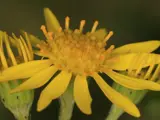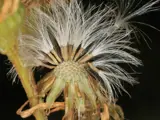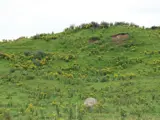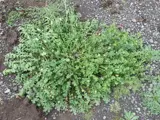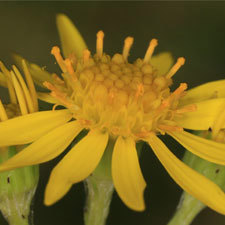 Ragwort
Ragwort
Common name: Ragwort
Botanical name: Jacobaea vulgaris (formerly known as Senecio jacobaea )
Management programme: Sustained Control Rule 4
Ragwort is a native to Europe, Asia, and Siberia and was introduced to New Zealand in the 1870’s as a garden plant.
In 1926 the cinnabar moth was released to reduce infestations throughout the country. The ragwort flea beetle was released widely during the late 1980’s and early 1990’s and is assisting with further control of ragwort infestations nation-wide.
Why is it a pest?
- Ragwort is a major pastoral weed.
- It is toxic to grazing cattle, deer, and horses causing liver damage (cirrhosis), photosensitisation (skin inflammation), jaundice and severe weight loss.
- Poisoned animals can take months to die as the toxins accumulate in the animal’s body.
- Ragwort can end up dominating pasture as animals will avoid grazing the plants and the area around them.
Where is it found?
- Ragwort will grow almost anywhere there is enough light especially in pasture and waste spaces. It will also grow in riverbeds, disturbed forest, shrubland, coastal areas, and bare land.
- Its seeds are wind dispersed over large distances. Seeds can also be spread by machinery and stock.
- Ragwort is found throughout the Bay of Plenty region in various densities. Biological control agents such as the flea beetle and cinnabar moth have helped to reduce infestations significantly over the years.
What does it look like?
- A robust erect biennial or perennial, with deeply lobed leaves and bright yellow flowers occurring in dense, flat topped clusters at the end of the stems
- Commonly grows to heights of 60cm but can reach up to 2m.
- Plants have an unpleasant smell when crushed.
- Bright yellow daisy-like flowers present mostly in spring
- In autumn the flowering stems die back and in some situations the whole plant may die.
What are the rules?
Sustained control
Sustained control pests are well established in the region and preventing the spread is no longer a realistic objective. Management focuses on reducing general impacts of the pest. Landowners/ occupiers are responsible for the control of these pest species on their land. Council may enforce control.
Occupiers must destroy ragwort within 10m of any property boundary where the adjoining occupier is also controlling it.
How do you get rid of it?
Recommended:
- Pasture management
- Maintain a vigorous dense pasture, especially in summer when seed is in the air.
- Graze sheep at three stock units per hectare or mob stock four times a year.
- Manual removal
- Grubbing (digging) or hand pulling works best for rosettes and early flowering plants.
- This is best done before flowering and is effective as long as the entire crown is removed and the first 5cm of the root.
- Mowing is not recommended as it encourages plants to produce multiple crowns.
- Spraying
- Spray seedlings and small rosettes (early to mid-winter) as this will kill most new seeds.
- Spot spray larger plants in spring.
- Biological control
- The ragwort flea beetle has now spread throughout the Bay of Plenty and is providing effective control.
- The cinnabar moth caterpillar is also providing good control in some hill country areas near bush.
Regular follow up treatment will be necessary for some years until the seed bank is exhausted.
CAUTION: When using any herbicide or pesticide, PLEASE READ THE LABEL THOROUGHLY to ensure that all instructions and directions for the purchase, use and storage of the product, are followed and adhered to.
Read more on pest control advice, information and regulations
Images

